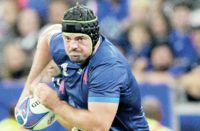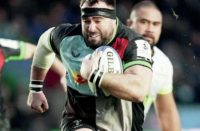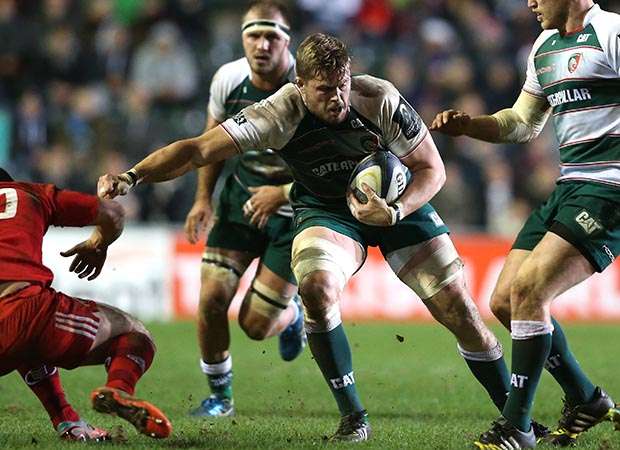 Never underestimate the electric-shock speed at which things can change in our sport. It is just under three months since England crashed out of the 2015 World Cup, and yet, with the arrival of a new head coach in Eddie Jones, the English clubs are brimful of players tearing up trees to impress him.
Never underestimate the electric-shock speed at which things can change in our sport. It is just under three months since England crashed out of the 2015 World Cup, and yet, with the arrival of a new head coach in Eddie Jones, the English clubs are brimful of players tearing up trees to impress him.
This England Form XV is based on those players who have shown exceptional form over the first three months of the season, both in Europe and in the Premiership. Their individual statements have been so emphatic that Billy Vunipola is the only regular England World Cup starter who makes the line-up.
The change is starkest in the dynamic form of Elliot Daly, and the realisation that had he been backed last summer England's midfield contortions after Jonathan Joseph was injured in the World Cup – with Sam Burgess picked at 12 and Brad Barritt moving to 13 – would have been redundant. Daly for Joseph at outside-centre, job done.
Few of the England incumbents have made an unanswerable case, and while Harlequins fans might gripe that Mike Brown, Chris Robshaw and Danny Care have not been selected – and Sale, Newcastle, Worcester, London Irish and Gloucester (bar Matt Kvesic) might share similar misgivings about their own players – there are good reasons for their absence.
Foremost, is that putting 50 points on clubs of the calibre of Calvisano in the European Challenge Cup is not remotely in the same league as the European Cup opposition faced by Saracens, Wasps and Exeter.
This selection is not presented as an England line-up against Scotland, not least because backs like Joseph, Mike Brown, Anthony Watson and George Ford have enough credit banked at Test level not to be dropped. The same cannot be said of the forwards.
15 Alex Goode (Saracens)
He has gone into overdrive for a Saracens side giving him a licence to roam. Goode has been finding gaps for fun, and appears to have found an extra yard of pace over the summer. The way Saracens use him increasingly as an extra play-maker is a good fit given that he spent so much of his formative rugby at fly-half, and as well as getting among the tries himself, his passing creates opportunities for others. Defence and high-ball game also sound.
14 Chris Ashton (Saracens)
The Saracens rugby director, Mark McCall, has been singing his praises loudly for two seasons, saying that Ashton merits an England recall. His form and strike rate pre-Christmas backs up McCall's view. Ashton is still unrivalled in the Premiership as a poacher, and much of this is down to having a homing-device in the top two inches which makes him unrivalled in England as a tracker of line-breaks. His kicking game has also gone up a grade – as has his tackling, where he no longer goes so high.
13 Elliot Daly (Wasps)
The Wasps strike-runner is emerging as the complete package at outside-centre. He has developed more power and pace without becoming muscle-bound, and what's not to like about a 13 with searing acceleration who has the confidence, and the ability, to make outside breaks? Add to that a siege-gun boot that can fire over penalties from inside his own half, and the knack of hitting raking diagonals to make territorial gains, and you have a multi-skilled operator.
12 Sam Hill (Exeter Chiefs)
He made an impressive impact in the first six games of the season and Exeter missed Hill's directness and physicality when he was ruled out of the European Cup double-header against Clermont, especially in the heavy defeat in the Massif Central. The 2013 England junior world champion has gold-standard credentials when it comes to getting over the gain-line, and then staying on his feet and slipping the ball out of contact after attracting more than one defender. Strong-tackling and heavier, at 6ft and 15st 10lbs (100kg) than Brad Barritt (6ft and 14st 13lbs / 95kg).
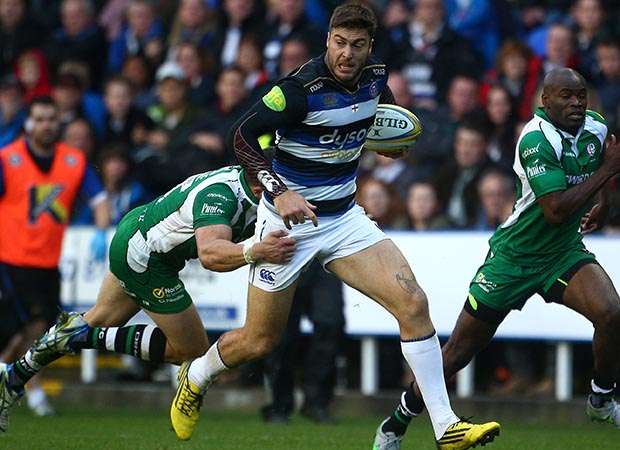 11 Matt Banahan (Bath, above)
11 Matt Banahan (Bath, above)
Bath may have been misfiring for most of this campaign but the same cannot be said for their ‘Tower of Power' on the left wing. The 6ft 7ins Banahan is a dangerous proposition again after slipping down the rankings following his last England appearance in the 2011 World Cup. He still has plenty to offer as he nears his 29th birthday, and given that Eddie Jones likes big wingers, a plan to maximise on Banahan's physical presence cannot be ruled out. The cross-kick looks tailor-made for the Bath giant, even though England have so far spurned that option.
10 Owen Farrell (Saracens)
Farrell was fortunate to be picked ahead of George Ford for the World Cup crunch games, but he has not allowed England's limp exit from the tournament to upset his equilibrium. The Saracens fly-half has put down a marker as the form 10 in the English game since returning to club duty. Although he has enjoyed an executive class ride behind a powerhouse pack, he has raised his game. This includes not only showing a sharp eye for the gap, but also a keener edge in terms of his running lines and accuracy of pass. His goal-kicking is as impressive as ever.
9 Joe Simpson (Wasps)
The scrum-half cog in a Wasps wheel that has turned so impressively to put the club on top of their European Cup ‘pool of death'. Simpson is a match-winner, not only in terms of having the pace to shred defences by running-in spectacular tries, but also by creating them – as he did for Elliot Daly at The Rec last weekend. He's developed a quick, unfussy service, and has a longer and more accurate kicking game than most of his scrum-half rivals. At 27 he has done the hard yards, and deserves his chance. There is the sense that with an ounce more self-belief Simpson could hit the mother-lode.
1 Mako Vunipola (Saracens)
He makes more metres as a carrier than any other England prop, and since the World Cup there have been signs that he has also improved at the scrum as part of a dominant Saracens pack. Much will depend on whether Mako is as solid against the big beasts at international level as he has been against Ulster, Toulouse and Oyonnax in Europe and his Premiership rivals. A loosehead with the priceless gift for a big man of agility, enabling him to spin out of tackles and create momentum.
2 Jamie George (Saracens)
A younger and cooler head on his shoulders than Dylan Hartley, George is an intelligent and effective component in the Saracens pack. Having learned his trade by understudying Schalk Brits and SA World Cup winning-captain, John Smit, he combines accuracy and consistency at lineout and scrum with a lively presence in the loose. Played fly-half as a youngster, and as Bath discovered in last season's Premiership final – and others have found out since – he can shift his barrel-shaped frame with alarming speed if the defensive doors are left ajar.
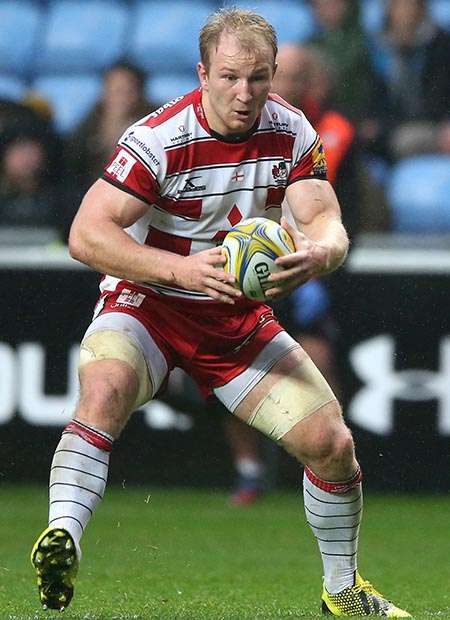 3 Jake Cooper-Woolley (Wasps)
3 Jake Cooper-Woolley (Wasps)
The Wasps strongman will be out of action for a couple of weeks with running repairs, but his efforts at tighthead during the first three months of the season have left most opponents in need of a scrum doctor. With Cooper-Woolley in harness the Wasps scrum was rock-solid in their landmark victories against Leinster and Toulon, and the Dorking-raised No.3 is also a handy unit in the loose. There is evidence that he tackles as hard as he scrummages, and is also like a snowplough if he gets a sniff of the try-line.
4 Mitch Lees (Exeter Chiefs)
It was notable that with Lees on the bench for the first hour of Exeter's visit to Clermont last week, the Chiefs forwards were a pale shadow of the pack that took it to the French side at Sandy Park. There was endeavour from the Devon men, but a shortage of the clout and conviction that have been Lees' trademark during the first stage of the season. The heavyweight Aussie-born, English qualified lock not only provides horsepower at the scrum and in the driving mauls, but is also smart and powerful at stealing yards on the pick-and-go.
5 Maro Itoje (Saracens)
Ever-present in the exceptional start to the season by his club, and as precocious a forward talent as English rugby has seen in the pro era. Itoje is 21, but shows such aptitude and technique in every facet of the game that many players ten years his senior struggle to match it. Has raw strength to go with an athleticism that makes him capable of playing at blindside as well as lock. If the Saracens pack is helping to nurture Itoje, then the 2014 England junior world champion is already repaying the debt.
6 Ed Slater (Leicester)
The Leicester skipper has wasted no time since making a late start to the season in the home win over Stade Francais, notching-up six consecutive appearances. The ring-rust following injury has now been scoured, with Slater – who is equally effective at lock – getting stronger with each game, and influential at blindside in the two back-to-back victories over Munster. This culminated in him outfoxing the Munster sentries to drive through for a try at Welford Road last weekend. If Eddie Jones is looking for steel, Slater is his man.
7 Matt Kvesic (Gloucester, above)
It is a close call between the Gloucester 7 and his Saracens rival, Will Fraser. Kvesic gets in not just because he has had more match-time, but also because he is having to work his proverbials off behind a Gloucester pack which is a bit of a jalopy compared with the Saracens tank that Fraser fires from. What's more, there is no doubt about Kvesic's effectiveness over the ball, or in the tackle, even though the momentum is frequently not in his favour. Give the Gloucester openside a stronger base to work off and he could do even more damage.
8 Billy Vunipola (Saracens)
An endangered species as one of England's few line-breaking forwards in the World Cup, Vunipola the younger has a leaner, fitter look to him after a few weeks at Allianz Park than he did after the altitude training in Denver. Carries a bigger stick for Saracens than he does for England, mainly because in a club team with multiple threats he is not used so regularly, or so predictably. With good hands and a low centre of gravity, he's as easy to turn-over as a dumper truck – but with Nathan Hughes looming on the horizon will have to look lively.


